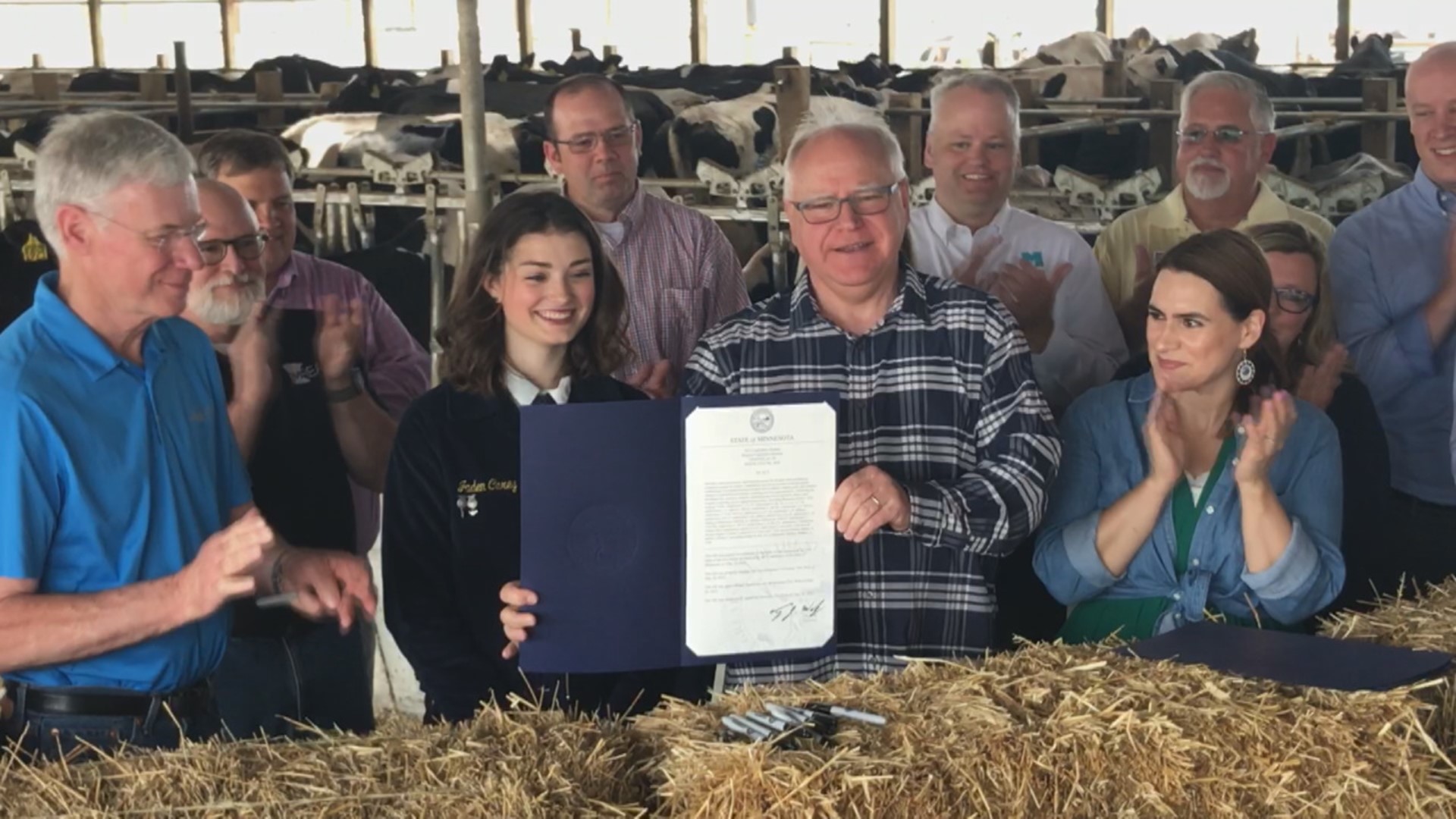GILMAN, Minn. — Governor Tim Walz traveled to a dairy farm 70 miles northwest of the Twin Cities Thursday to tout a bipartisan agriculture bill that will help more farmers connect to technology, and deliver some relief from their weather-related financial hits.
"Nothing is easy when it comes to this, especially now. And to be able to move a package this big, and this impactful really shows the commitment," Walz told reporters and others who gathered for the event.
The setting was a large barn filled with milk cows on the Czech family's farm north of Foley, near the small hamlet of Gilman. Mark Czech said he was two years old when his father started the farm with just seven cows. Now he has more than 2,000 head, including nearly 700 milk cows.
"Everything for our own feed is harvested here. We raise all our own replacements. So, it's very tightknit and sustainable," Czech explained.
"People like to make the distinction between corporate farms and family farms. I feel like this is a family farm."
Originally, the Drought Disaster Relief Bill and the Agriculture-Housing Bill were traveling separately through the legislature. But when the Ag-Housing bill stalled in conferenced committee, the farm chairs agreed to strip the ag provisions out of that bill and tack them onto the drought relief bill.
"We finally got the drought relief, and we have a whole heck of a lot of money going to rural broadband," Rep. Mike Sundin of Esko remarked.
"That's huge for the whole state of Minnesota, not just farmers."
House Democrats and Senate Republicans confirmed they got together over three large pizzas at the Capitol and hammered out a deal.
"Getting this bill over the finish line was tremendously important for all of our state, especially border-to-border broadband and the economic development that represents our farmers and rural communities."
Sundin credited his committee vice chair, Rep. Samantha Vang of Brooklyn Center, for helping pull the deal together. At the bill signing, Vang said she was happy the bill made it through.
"Agriculture is one of the least partisan issues I've ever worked on," Rep. Vang told reporters.
"I was just so proud to get this through. There's a lot of good stuff in there to help farmers mitigate what they've been going through with the drought, with Avian Influenza."
The key features of the bill include:
- $200 million for rural broadband and a pilot program for lower population density broadband
- $18.4 million in drought relief including direct grants and relief through the Rural Finance Authority.
- $1.25 million for a new down payment assistance program for beginning farmers.
- $827,000 to encourage new farmers from underrepresented communities.
- $1.5 million for the Agricultural Emergency Account to support animal disease preparedness and response.
- $1 million to the U of M to buy diagnostic equipment to test for animal diseases.
- $1.25 million to encourage commercial-scale production of biofuels, renewables, and biomass thermal energy.
Czech said that he's already using a lot of technology to manage inputs such as the nutrients put on his fields. And, when the feed is being mixed, he'll get a real time alert via Wi-Fi if there's a wrong mixture of ingredients.
He lamented that the number of families still involved in farming has dwindled, and it's not easy to find younger people willing to take over for retiring farmers. He said immigration issues need to be solved, because migrant workers constitute a substantial part of the workforce in agriculture.
The 2022 agriculture bill does feature an increase in grants for beginning farmers, to help more aspiring growers take on the farm profession.
Watch more Minnesota politics:
Watch the latest political coverage from the Land of 10,000 Lakes in our YouTube playlist:

